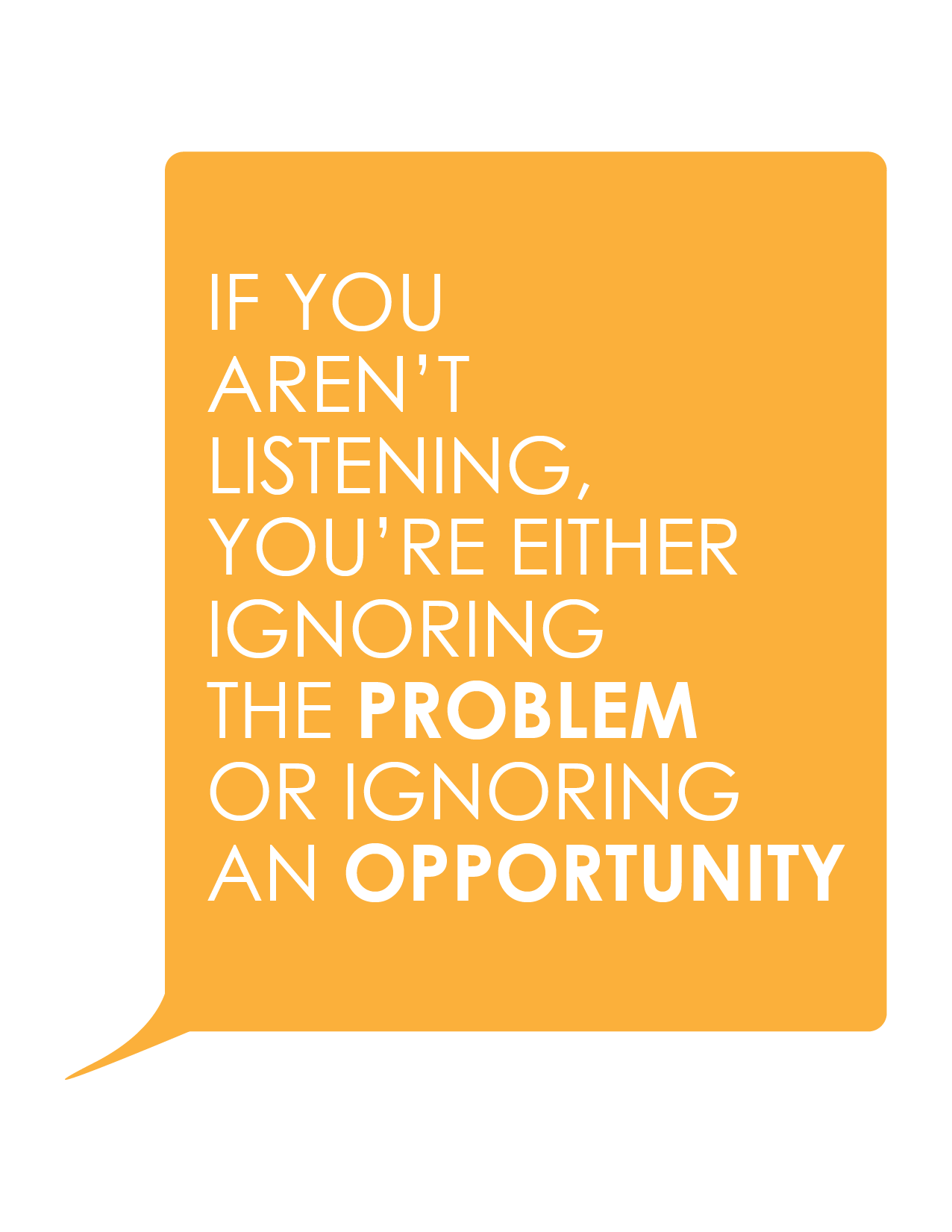Best Practices: How To Learn And Prosper From Social Listening
Catherine Roth Digital Direct Marketing, Trends and POVWhat are my customers thinking? Which messaging resonates most with my audiences? What are people saying about my product? Trying to get inside your target audience’s mind is the holy grail for marketers. Think you need a crystal ball to find the answers? Think again.
People are talking and sharing their opinions – both good and bad – on social media. If you aren’t listening to what your customers (and others) are saying on these platforms, you could be ignoring a problem or missing opportunities. When customers air grievances or bestow praise online – to their friends and followers or anonymously – you are given an opportunity to engage.
We reflexively take to Facebook, Twitter, Yelp, and other forums to voice opinions regarding experiences with companies and brands. It could be praise for a product or employee or criticism over something that didn’t go well. We see our connections’ Likes and comments. And when someone is “seeking recommendations,” people are willing to share second-hand experiences that weren’t even their own. All of this can spread faster than greased lightning online.
By using various social listening tools (here’s a list of 14 free ones), you can find what people are saying about you, where they’re saying it, and how they’re engaging with your brand. Gathering these insights is powerful information that can be incorporated into your overall marketing strategy.
Now That You’re Listening, What Should You Do?
So you know what your customers are saying online and where they are saying it – now what? There are many potential ways to put these insights to work, including the ability to:
- Use that information to identify potential differentiators between you and your competitors, which can be applied to messaging for various tactics within your marketing plan
- See where your audience is most active online to identify where you should spend your media dollars
- Reach your audience on the right platforms at the right time with the right messaging
- Intervene to speak with customers to help make their experiences better
- Crowd-source ideas to make improvements or innovations to products and processes
When you are engaged in a positive way with your customers, other potential customers see that and may be more likely to use your brand in the future. How does the public speak out? Here are two recent examples…
Exhibit A: #OptOutside with REI and Their Custom Hashtag
A great example of a company reacting in a positive way is REI’s #OptOutside campaign. [Why REI’s #OptOutside Is A Model For The Future Of Marketing; Ad Age, November 03, 2015] Since 2015, this hashtag has been gaining momentum among REI’s target audience and beyond. Were REI’s customers (many of whom are members of the co-op) asking not to shop on Black Friday? REI was in tune with their audience and made the brave choice to close their storefronts on one of the busiest shopping days of the year.
 REI was one of the first Big Box stores to garner goodwill by announcing they are taking Black Friday off.
REI was one of the first Big Box stores to garner goodwill by announcing they are taking Black Friday off.
They went further by encouraging their employees and customers to go out and be active instead of working or shopping. Many of those people will use REI’s products while they’re outside while others shop, shedding calories gained on Thanksgiving feasts. And those who do will likely flaunt their decision with pride on social media – using REI’s custom hashtag for the occasion: #OptOutside.
If someone wants to shop while others #OptOutside, the online store is always open. So REI is gaining positive feedback from this campaign by closing their storefronts, but not losing out completely from Black Friday shoppers. They can also measure use of the hashtag to see what activities were most popular and attempt to cater to them. It’s a win-win situation for the company.
Exhibit B: Target Goes Off Target
Let me first say that I love Target and really couldn’t live without them. I go to the store at least once a week (okay, let’s face it…I usually go at least twice a week). However, Target provides a cautionary tale in terms of social listening and following through on their promises.
For years people have complained about holiday creep in reaction to retailers and advertisers starting their Christmas and holiday ads and displays soon after Back to School. Target gained positive press in late October for declaring that they would hold off until after Halloween.
PT Barnum’s quote: “I don’t care what you say, just spell my name right,” isn’t always the best policy.
The praise they received was short-lived. Two days later, people who had seen Target’s headlines called them out for having Christmas displays in store anyway.  [Target Claims It Won’t Start Christmas Early, Then Starts Christmas Early Anyway; Huffington Post, October 25, 2017] Target’s response? To specify that their intention was really to delay moving these displays to the front of the store until after Halloween.
[Target Claims It Won’t Start Christmas Early, Then Starts Christmas Early Anyway; Huffington Post, October 25, 2017] Target’s response? To specify that their intention was really to delay moving these displays to the front of the store until after Halloween.
Target should have lived up to its promise or been more specific about what they were actually doing. What could have been a social listening gift quickly became a lump of coal.
Social Listening Provides Actionable Insight. Hear that!
There are many ways to leverage social listening. You can engage your target audience and better understand what’s working (and what isn’t) with your brand and advertising. Social listening is critical to incorporate into your strategy as you’re working to complete your marketing plan.
There’s so much social media chatter out there, but filled with tons of useful insight, just for YOU. So don’t ignore it. Embrace it! Let it help guide your current marketing plans and set the foundation for the information that you will use moving forward with your brand.